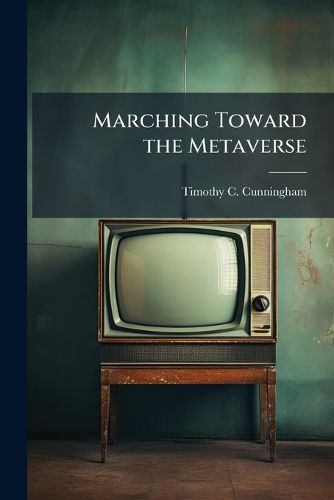Readings Newsletter
Become a Readings Member to make your shopping experience even easier.
Sign in or sign up for free!
You’re not far away from qualifying for FREE standard shipping within Australia
You’ve qualified for FREE standard shipping within Australia
The cart is loading…






Traditional models representing how messages are communicated through traditional media are inappropriate for depicting how they are communicated (or, rather, exchanged) through the new media. The former depict monologic (one-to-many) communication flows, whereas dialogic (peer-to-peer and many-to-many) flows represent the dominant mode of communication in the new media universe. Writers in government and military circles tend not to portray new media strategic communication as wholly separate and distinct from strategic communication through traditional media. This monograph explains how new media strategic communication is fundamentally different from strategic communication through traditional media and then applies this understanding to the re-conceptualization and re-design of government new media strategic communication efforts. The overarching conclusion offered is that successful strategic communication in the new media universe is no longer the exclusive domain of professional strategic communicators insulated from most aspects of mission execution. To compete with the proliferation of messages exchanged in today's Attention Economy, the government and military must co-opt the skills of nearly all personnel charged with carrying out disparate aspects of policy, critically those in theater (Provincial Reconstruction Teams, District Support Teams, etc.).
This work has been selected by scholars as being culturally important, and is part of the knowledge base of civilization as we know it. This work was reproduced from the original artifact, and remains as true to the original work as possible. Therefore, you will see the original copyright references, library stamps (as most of these works have been housed in our most important libraries around the world), and other notations in the work.
This work is in the public domain in the United States of America, and possibly other nations. Within the United States, you may freely copy and distribute this work, as no entity (individual or corporate) has a copyright on the body of the work.
As a reproduction of a historical artifact, this work may contain missing or blurred pages, poor pictures, errant marks, etc. Scholars believe, and we concur, that this work is important enough to be preserved, reproduced, and made generally available to the public. We appreciate your support of the preservation process, and thank you for being an important part of keeping this knowledge alive and relevant.
$9.00 standard shipping within Australia
FREE standard shipping within Australia for orders over $100.00
Express & International shipping calculated at checkout
Traditional models representing how messages are communicated through traditional media are inappropriate for depicting how they are communicated (or, rather, exchanged) through the new media. The former depict monologic (one-to-many) communication flows, whereas dialogic (peer-to-peer and many-to-many) flows represent the dominant mode of communication in the new media universe. Writers in government and military circles tend not to portray new media strategic communication as wholly separate and distinct from strategic communication through traditional media. This monograph explains how new media strategic communication is fundamentally different from strategic communication through traditional media and then applies this understanding to the re-conceptualization and re-design of government new media strategic communication efforts. The overarching conclusion offered is that successful strategic communication in the new media universe is no longer the exclusive domain of professional strategic communicators insulated from most aspects of mission execution. To compete with the proliferation of messages exchanged in today's Attention Economy, the government and military must co-opt the skills of nearly all personnel charged with carrying out disparate aspects of policy, critically those in theater (Provincial Reconstruction Teams, District Support Teams, etc.).
This work has been selected by scholars as being culturally important, and is part of the knowledge base of civilization as we know it. This work was reproduced from the original artifact, and remains as true to the original work as possible. Therefore, you will see the original copyright references, library stamps (as most of these works have been housed in our most important libraries around the world), and other notations in the work.
This work is in the public domain in the United States of America, and possibly other nations. Within the United States, you may freely copy and distribute this work, as no entity (individual or corporate) has a copyright on the body of the work.
As a reproduction of a historical artifact, this work may contain missing or blurred pages, poor pictures, errant marks, etc. Scholars believe, and we concur, that this work is important enough to be preserved, reproduced, and made generally available to the public. We appreciate your support of the preservation process, and thank you for being an important part of keeping this knowledge alive and relevant.